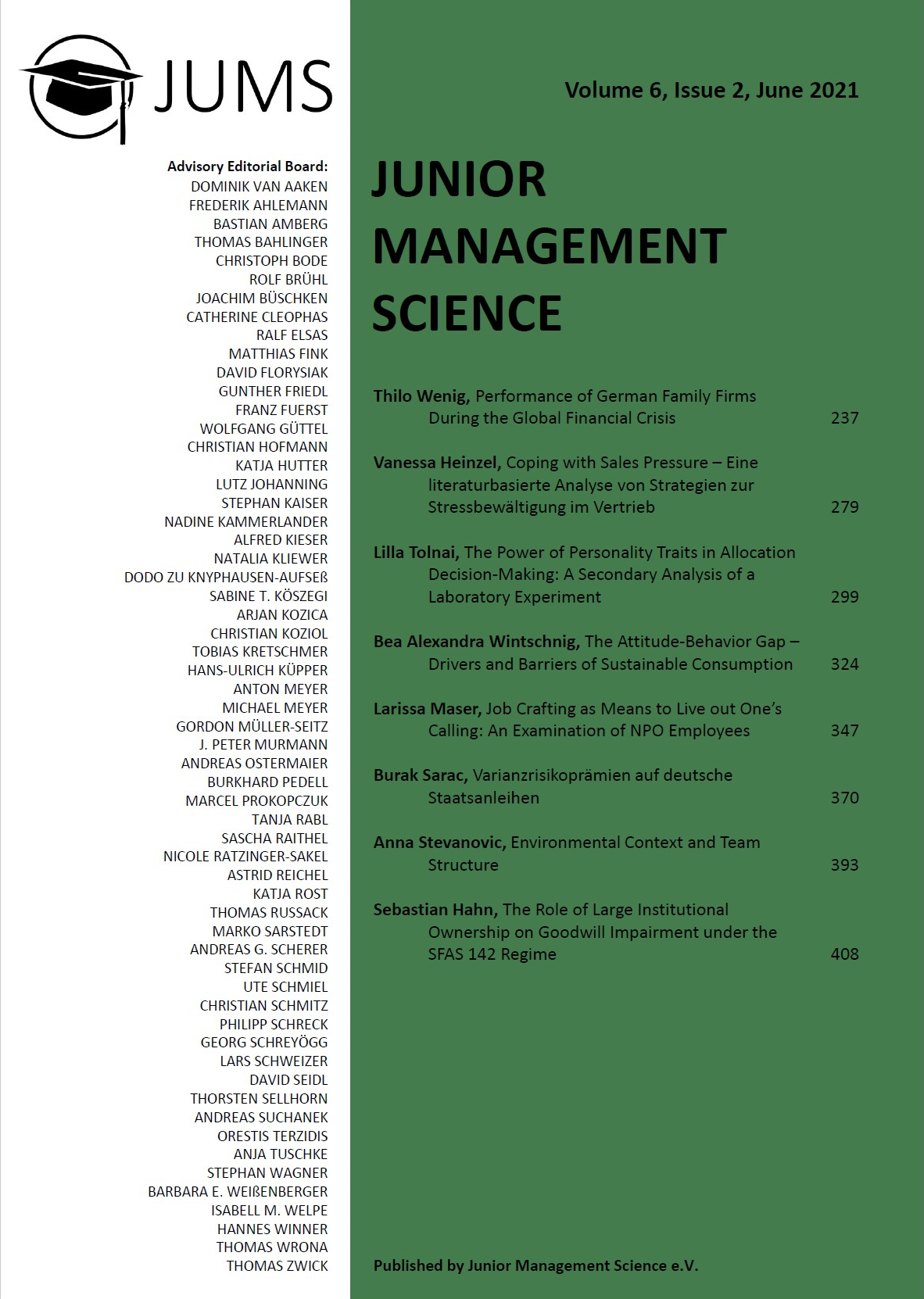Abstract
Employees increasingly search for jobs in which they can pursue their preferences and interests – more precisely, their callings. Those pursuing their callings are assumed to be more satisfied with their job and to perform better. To provide more insight into this topic, this study examines the relationship between perceiving a calling and job satisfaction by actively pursuing the calling. However, it has not yet been extensively analyzed how employees can convert the perception of a calling at work into actually living it out. This question can possibly be explained by the emerging phenomenon called job crafting. Employees engaging in job crafting techniques might change their work environment in order to be able to live out their calling. Therefore, this study investigated the role of job crafting as moderator in the relationship between perceiv-ing a calling and living a calling as well as in the relationship between living a calling and job satisfaction. The model was tested in a context of nonprofit organizations using a sample of 300 employees and a cross-sectional study design. Data was collected with an online survey for a period of three weeks and analyzed with IBM SPSS PROCESS by means of OLS regression analysis. Living a calling was found to be a full mediator in the relationship between perceiving a calling and job satisfaction. The variables scope of action, employment relationship, and gender are also significantly related to job satisfaction. Against expectations, job crafting does not show any of the two moderat-ing effects but was found to be a partial mediator in the relationship between perceiv-ing a calling and living a calling.
Keywords: Calling; job crafting; job satisfaction; nonprofit organizations.

This work is licensed under a Creative Commons Attribution 4.0 International License.
Copyright (c) 2021 Junior Management Science e.V.

